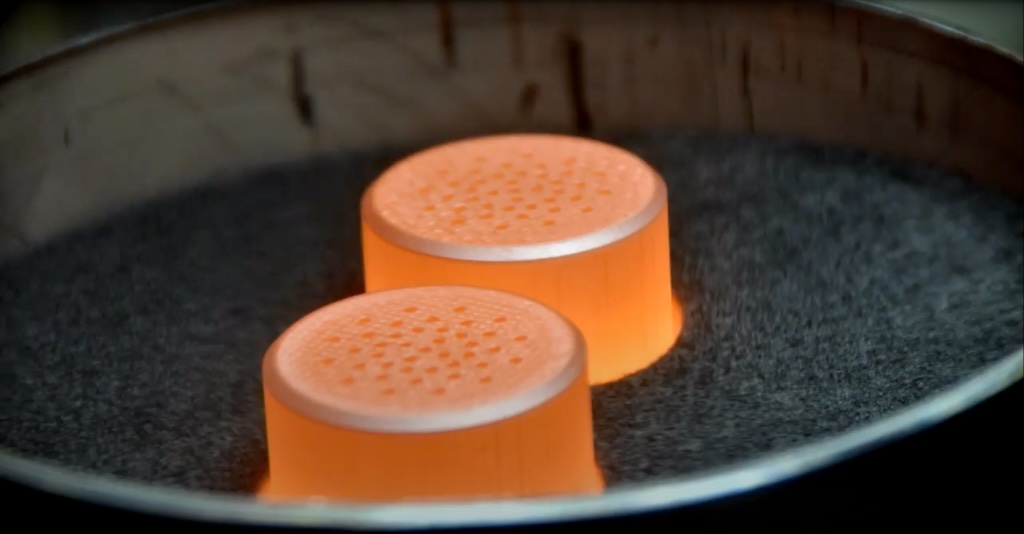
ARSTECHNICA.COM
NASA awards SpaceX a contract for one of the few things it hasnt done yet
Hailing a ride NASA awards SpaceX a contract for one of the few things it hasnt done yet This was the first time ULA's Vulcan rocket was eligible to compete for a major NASA contract. Stephen Clark Nov 26, 2024 1:23 pm | 36 Graphite impact shells containing plutonium-238 glowing red hot. Credit: NASA Graphite impact shells containing plutonium-238 glowing red hot. Credit: NASA Story textSizeSmallStandardLargeWidth *StandardWideLinksStandardOrange* Subscribers only Learn moreWhen you compare SpaceX to the world's other space enterprises, it's probably easier to list the things SpaceX hasn't done instead of reciting all of the company's achievements.One of these is the launch of nuclear materials. SpaceX has launched a handful of planetary science missions for NASA, but these spacecraft have all used solar arrays to generate electricity. In this century, NASA's probes relying on nuclear power have all flown on rockets built by United Launch Alliance (ULA), a 50-50 joint venture between Boeing and Lockheed Martin.This is about to change with a $256.6 million contract NASA awarded to SpaceX on Monday. The contract covers launch services and related costs for SpaceX to launch Dragonfly, a rotorcraft designed to explore the alien environment of Saturn's largest moon, Titan.Dragonfly's power source is a radioisotope thermoelectric generator (RTG), which generates electricity from the heat put out by the radioactive decay of plutonium-238. These plutonium-fueled generators have flown on many previous space missions, including NASA's Perseverance and Curiosity rovers on Mars, the New Horizons spacecraft that beamed back the first up-close views of Pluto, and the long-lived Voyager probes exploring interstellar space.All of these missions were launched on rockets that have either retired or are nearing retirement: the Atlas V, the Titan, and the space shuttle, to name a few.So, it is time for NASA to certify a new generation of rockets to launch nuclear-powered payloads. The Space Force is already working on this for ULA's Vulcan rocket, the replacement for the Atlas V, which is due to launch an innovative nuclear propulsion demonstration as soon as 2027. A SpaceX Falcon Heavy rocket lifts off with NOAA's GOES-U weather satellite on June 25, 2024. Credit: SpaceX SpaceX's Falcon Heavy has launched 11 times, all successfully, and is based on the Falcon 9 rocket rated to ferry people into orbit. NASA already certified Falcon Heavy to launch its most expensive robotic missions, such as the Europa Clipper mission, which launched last month.But there is an additional certification required to launch nuclear materials, including a review of the rocket's explosive self-destruct range safety system to ensure it would not damage the payload and cause a release of radioactive plutonium. The RTG itself is designed to survive an impact with the ocean intact.Notably, the Dragonfly launch was one of the first times United Launch Alliance has been eligible to bid its new Vulcan rocket for a NASA launch contract. NASA officials gave the green light for the Vulcan rocket to compete head-to-head with SpaceX's Falcon 9 and Falcon Heavy after ULA's new launcher had a successful debut launch earlier this year. With this competition, SpaceX came out on top.A half-life of 88 yearsNASA's policy for new space missions is to use solar power whenever possible. For example, Europa Clipper was originally supposed to use a nuclear power generator, but engineers devised a way for the spacecraft to use expansive solar panels to capture enough sunlight to produce electricity, even at Jupiter's vast distance from the Sun.But there are some missions where this isn't feasible. One of these is Dragonfly, which will soar through the soupy nitrogen-methane atmosphere of Titan. Saturn's largest moon is shrouded in cloud cover, and Titan is nearly 10 times farther from the Sun than Earth, so its surface is comparatively dim. The Dragonfly mission, seen here in an artist's concept, is slated to launch no earlier than 2027 on a mission to explore Saturn's moon Titan. Credit: NASA/JHUAPL/Steve Gribben Dragonfly will launch with about 10.6 pounds (4.8 kilograms) of plutonium-238 to fuel its power generator. Plutonium-238 has a half-life of 88 years. With no moving parts, RTGs have proven quite reliable, powering spacecraft for many decades. NASA's twin Voyager probes are approaching 50 years since launch.The Dragonfly rotorcraft will launch cocooned inside a transit module and entry capsule, then descend under parachute through Titan's atmosphere, which is four times denser than Earth's. Finally, Dragonfly will detach from its descent module and activate its eight rotors to reach a safe landing.Once on Titan, Dragonfly is designed to hop from place to place on numerous flights, exploring environments rich in organic molecules, the building blocks of life. This is one of NASA's most exciting, and daring, robotic missions of all time.After launching from NASA's Kennedy Space Center in Florida in July 2028, it will take Dragonfly about six years to reach Titan. When NASA selected the Dragonfly mission to begin development in 2019, the agency hoped to launch the mission in 2026. NASA later directed Dragonfly managers to target a launch in 2027, and then 2028, requiring the mission to change from a medium-lift to a heavy-lift rocket.Dragonfly has also faced rising costs NASA blames on the COVID-19 pandemic and supply chain issues and an in-depth redesign since the mission's selection in 2019. Collectively, these issues caused Dragonfly's total budget to grow to $3.35 billion, more than double its initial projected cost.Stephen ClarkSpace ReporterStephen ClarkSpace Reporter Stephen Clark is a space reporter at Ars Technica, covering private space companies and the worlds space agencies. Stephen writes about the nexus of technology, science, policy, and business on and off the planet. 36 Comments
0 Commentaires
0 Parts
22 Vue


